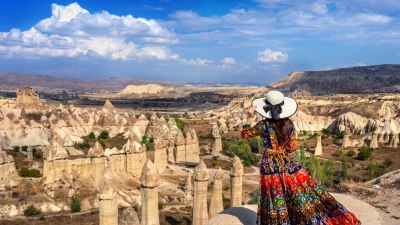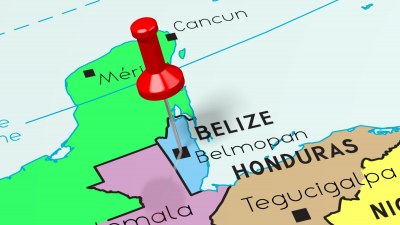Why This Remote Tribe in Ethiopia Could Change How You Travel Forever
Discover how a remote Ethiopian tribe is reshaping travel experiences and sustainable tourism.

Travel is an evolving phenomenon as people search for authentic experiences that deepen their understanding of different cultures. With mass tourism often diluting these connections, many travelers are now looking towards remote, lesser-known destinations that offer genuine interactions with indigenous cultures. One such destination is a secluded tribe in Ethiopia, a place rich with tradition and diversity. This article explores how this remote tribe could change travel forever, paving the way for more sustainable and meaningful journeys.
The Unique Heritage of the Tribe
Nestled in the Omo Valley, the remote tribe of the Hamar offers visitors a unique glimpse into age-old customs and lifestyles that have been preserved over generations. The Hamar people are known for their vibrant culture, which includes elaborate rituals, colorful attire, and fascinating social structure. Visitors to this area are greeted with warm hospitality and the chance to experience ceremonies that resonate with centuries of history. Travelers often find themselves immersed in daily life, from livestock herding to traditional coffee ceremonies, providing insights that are invaluable compared to standard tourist attractions.
Cultural Sensitivity and Ethical Travel
As travel habits shift towards more ethical considerations, engaging with tribes like the Hamar offers a blueprint for responsible tourism. While the allure of witnessing unique traditions is strong, it is essential for travelers to approach these experiences with cultural sensitivity. This means respecting the tribe's customs, seeking permission before taking photographs, and understanding local social dynamics. When visitors show genuine interest and respect, it fosters deeper connections and promotes sustainable practices that benefit the community.
Impact of Tourism on the Tribe
The influx of tourism can bring both benefits and challenges to remote tribes. On one hand, it can provide economic opportunities and raise awareness about the tribe's way of life. On the other, it risks commodifying culture and leading to cultural erosion if not managed responsibly. The Hamar tribe has begun to navigate these challenges by establishing guidelines for tourists, ensuring that their heritage remains intact while also adapting to modern influences. By emphasizing the importance of sustainable tourism, the tribe helps shape a travel model that values preservation over exploitation.
Sustainable Practices in the Hamar Community
Among the Hamar, sustainability is not just about preserving the environment; it extends to maintaining their cultural practices and enhancing their economic resilience. Traditional methods of agriculture and livestock management are practiced, ensuring that their resources are utilized wisely. Travelers can engage with these activities, learning firsthand how the tribe harmonizes with their surroundings. Visitors often participate in agricultural practices during their stays, gaining a deeper respect for the land and the importance of preserving it for future generations.
Adventures Beyond the Hamar Tribe
While the Hamar tribe is a significant draw, the Omo Valley boasts a rich tapestry of cultures. Each tribe in the region has its distinct customs, languages, and dressing styles. Exploring this diversity enhances the travel experience. Engaging with neighboring tribes such as the Mursi, known for their striking lip plates, or the Karo, famed for their body painting, offers travelers a broader understanding of Ethiopia's cultural mosaic. This interconnectedness underscores the importance of cultural exchange while traveling responsibly across diverse landscapes.
Building Personal Connections
Perhaps the most significant takeaway from visiting remote tribes like the Hamar is the opportunity for personal connection. Whether through shared meals, stories told around the fire, or participating in traditional dances, travelers form bonds that transcend geographical and social barriers. These interactions illuminate the realities of life in the Hamar community, challenging preconceived notions about indigenous cultures. The richness of these experiences can lead to ongoing relationships, encouraging travelers to advocate for the tribe's well-being long after their journey concludes.
Eco-Tourism: A Growing Trend
The rise of eco-tourism reflects a growing awareness among travelers about the impact of their journeys on the environment and local communities. This trend aligns perfectly with the ethos of the Hamar tribe and their approach to tourism. By promoting tours that minimize environmental impact, prioritize local economic benefits, and protect cultural authenticity, eco-tourism presents a win-win situation for everyone involved. Travelers looking for transformative experiences are increasingly drawn to eco-friendly options, making the visit to the Hamar tribe a strong example of how travel can be both rewarding and responsible.
Educational Opportunities
Traveling to meet the Hamar tribe provides unique educational opportunities for visitors from around the world. From understanding their social systems and gender roles to learning about traditional healing practices, there is an abundance of knowledge waiting to be discovered. This immersion into the tribal way of life broadens perspectives, cultivating a deeper appreciation for diversity in human experience. Educational travel encourages dialogue, critical thinking, and a sense of global citizenship among participants.
Shaping Tomorrow's Travelers
As more individuals seek authentic travel experiences, tribes like the Hamar have the unique opportunity to shape the next generation of travelers. Engaging with these communities challenges the norms of leisurely travel, emphasizing the importance of cultural respect, environmental stewardship, and ethical tourism practices. By incorporating lessons learned from these interactions, travelers can return home as advocates for responsible tourism, sparking dialogue about the preservation of global cultures and traditions.
The Role of Technology in Modern Travel
While technology has transformed the way we travel, there is a delicate balance to strike between the benefits it offers and the authenticity of experiences. Access to information can facilitate awareness and education about tribes like the Hamar, but it can also lead to overtourism if not managed correctly. Technology plays a dual role, enabling travelers to connect with remote destinations while also encouraging responsible practices that protect cultural integrity. By leveraging technology wisely, we can enhance our understanding of diverse experiences without overwhelming local communities.
Documenting the Journey
Travelers visiting the Hamar tribe often feel compelled to document their experiences, whether through photographs, journals, or social media. These narratives can serve as powerful tools for advocacy, sharing stories that promote cultural awareness and global understanding. However, it is crucial to prioritize consent and avoid exploitation when sharing these moments. Engaging with the tribe before publishing content allows for a respectful dialogue about how they wish to be represented and avoids misinterpretations that may arise from outside perspectives.
A New Era of Travel
In conclusion, the remote tribes of Ethiopia, particularly the Hamar, have much to teach us about the future of travel. As we venture beyond the typical tourist traps and engage directly with indigenous cultures, we foster deeper understandings that are beneficial for both travelers and local communities. By embracing ethical tourism, advocating for cultural resilience, and prioritizing sustainable practices, we can ensure that our adventures have a positive impact. The lessons learned from tribes like the Hamar hold the potential to guide the travel industry towards a more responsible and enriching future for both travelers and the cultures they encounter.











